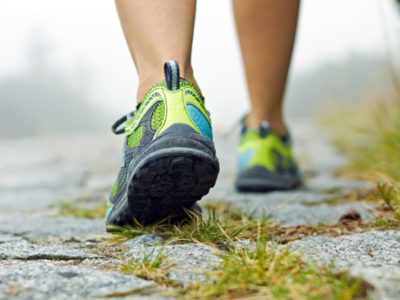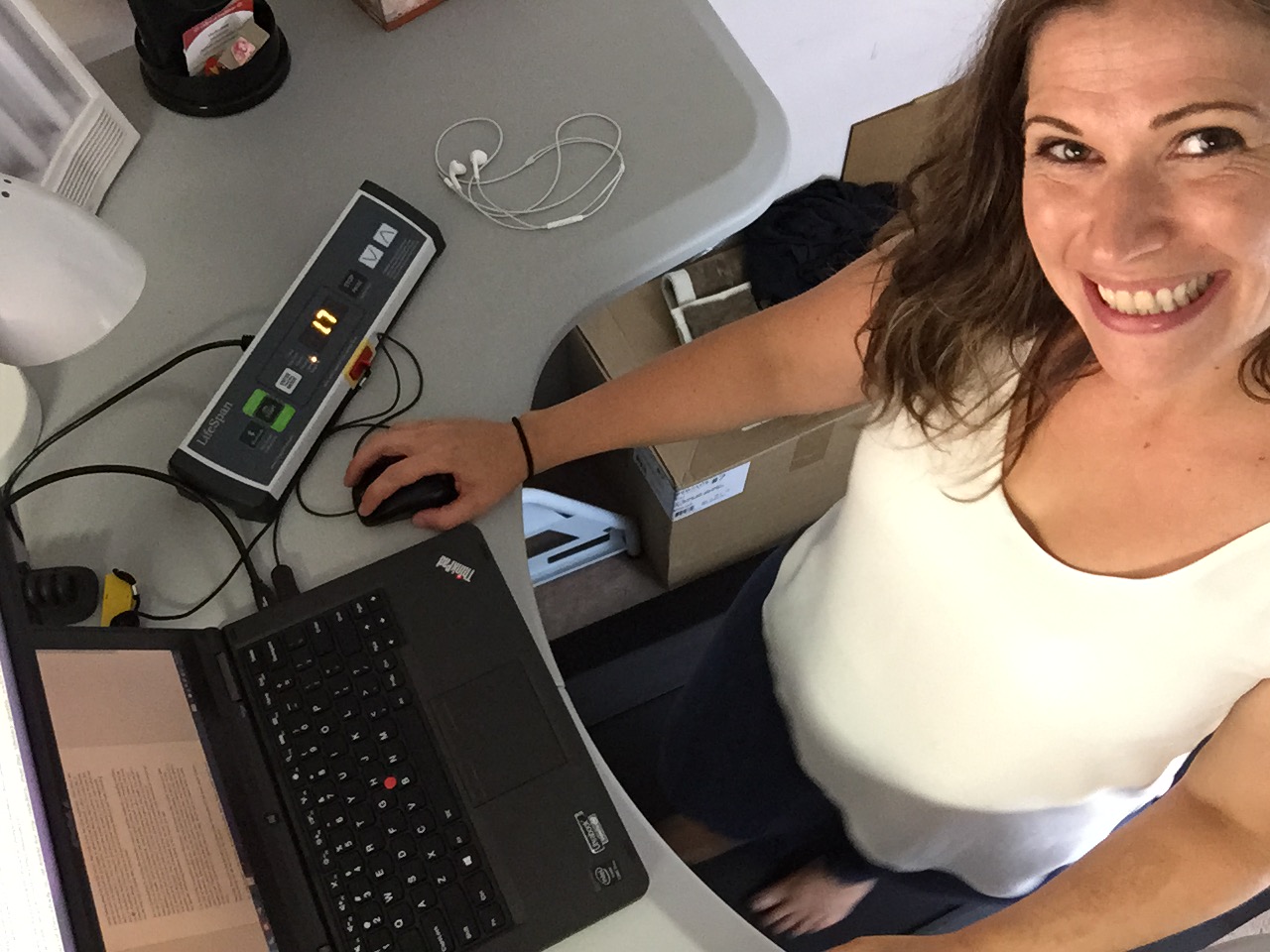Many of us think we can cancel out an otherwise sedentary lifestyle (sitting at our desk job, commuting in the car, watching TV, and spending way too much time on Facebook) by going to the gym a few times per week and breaking a sweat. In fact, it’s common to think of exercise as a sort of “payment” to put in so we can veg out on the couch afterward (eating whatever food we’ve “earned”) and not feel guilty about it.
It’s true that regular exercise comes with a number of benefits and is indispensible for staying healthy. But, a growing body of research is showing that it’s not just the absence of exercise that makes sitting an issue. Sitting itself, especially for long periods, is actually hazardous for our bodies.
And unfortunately, you can’t make up for sitting all day by giving 110% at CrossFit for an hour in the evening.
In fact, the scientific literature has been churning up data that should have all of us rethinking our sitting habits. Earlier this year, a meta-analysis published in the Annals of Internal Medicine pooled the results of 47 studies on sedentary behavior, the largest study of its kind to date. Across the board, prolonged periods of sitting were linked to higher risk of heart disease (both incidence and death), cancer (both incidence and death), type 2 diabetes, and death from all causes.
Save 80% Off the Foundations of Health
Expand your health knowledge on a wide range of topics relevant to you, from how to evaluate scientific studies, to therapeutic diet and lifestyle, to leaky gut and gut microbiome health, to sustainable weight loss, and much more!!!
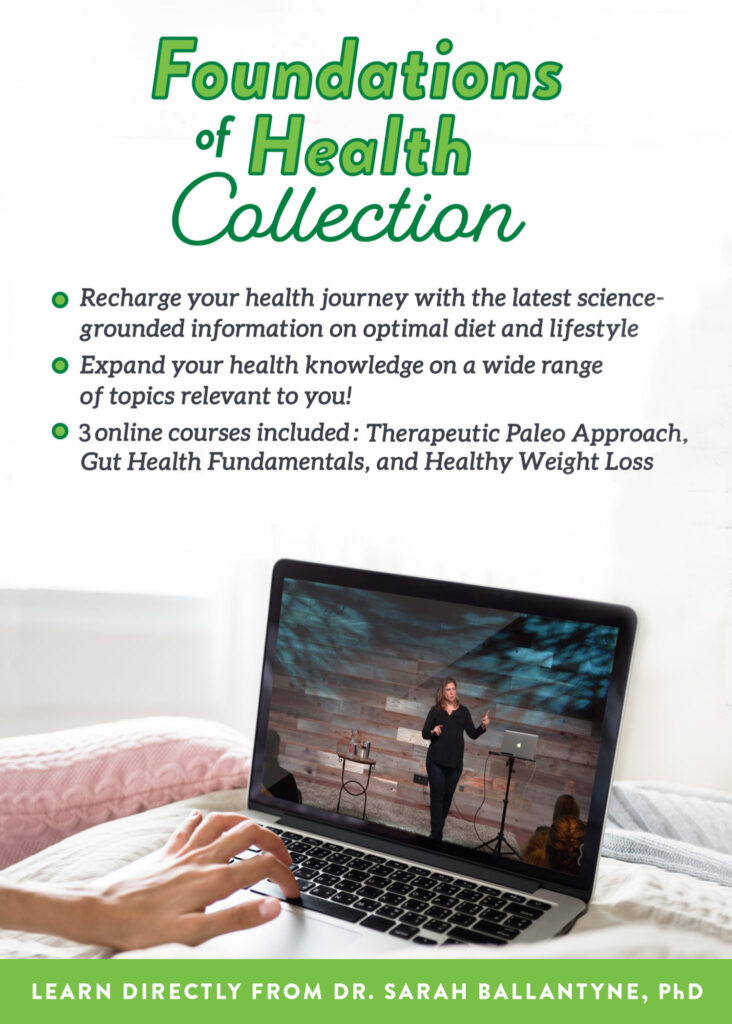
Just how big of a risk increase are we talking? By some studies’ estimates, every extra hour you spend sitting in front of the TV each day is associated with an 18% increase in heart disease death and an 11% increase in death from all causes. Those are significant numbers! And if you really want to scare yourself, one study framed it this way: every hour of TV you watch after the age of 25 reduces your life expectancy—at least statistically—by almost 22 minutes.
Even more alarming, the recent meta-analysis showed that regular exercise did not wipe out the harmful effects of extended sitting. Although people who didn’t exercise and also had sedentary lifestyles fared the worst overall, people who exercised on top of spending long periods sitting down still faced higher risk of death and disease, relative to those who were more active throughout the day. That means that no matter how many buckets of sweat you lose at Crossfit each week, if you spend the rest of your time sitting down and not moving, you’re still putting yourself in danger.

How Does Sitting Cause Problems?
Researchers are still trying to understand the exact mechanisms that make sitting such a hazard for our health. But, we have enough evidence from animal models and human experiments to start piecing the puzzle together.
The biggest issue is the effect of inactivity on certain metabolic processes in your body, especially in your muscles. Prolonged sitting can suppress the activity of lipoprotein lipase (LPL), an enzyme involved in lipid metabolism, and in turn contribute to high triglycerides and low HDL. Likewise, the lack of muscle contraction that happens when you sit for a long time can reduce glucose uptake and contribute to elevated blood sugar. The cellular changes from sitting happen very quickly (and are improved as soon as you stand up), so even one day of extreme inactivity can be a detriment. All of these problems start setting the stage for a variety of chronic diseases.
The Benefits of Gentle Movement
Frequent movement doesn’t mean you need to run a marathon every day! While exercise has tons of benefits, like reducing your risk of heart disease, certain cancers, diabetes, insulin resistance, stress, anxiety, cognitive decline, and a host of other things we all want to avoid, even gentle movement like a slow amble has tremendous benefits!
One of the major ways gentle movement can boost your health is through its impact on lymph flow. Your lymphatic system (which transports lymph fluid through a network of tissues and organs—including your tonsils, spleen, adenoids, and lymph nodes) plays a huge role in immune function, fluid regulation, the absorption of lipids, and basically ridding your body of waste and other unwanted materials. Because it uses pumping mechanisms to operate, your lymph system relies partially on the pressure and contractions from surrounding tissue, such as muscle. So, one of the best ways to improve lymph flow is by—you guessed it—moving your body. Experiments using electrical stimulation show that muscle contractions can increase lymph flow to twice of what it is during rest, and voluntary muscle contractions (where you don’t get zapped with electricity) have a similar effect. You can boost your lymph flow by simply moving frequently in ways that gently engage your muscles.
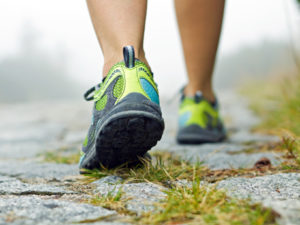 There’s more to the story, too. Gentle movement, when it also involves bearing weight, helps improve bone mineral density and protect against fracture—across all age groups, and regardless of whether you’re male or female. Mechanical loads from extra weight (from dumbbells, grocery bags, your children, your overweight cat, or even from your own body as you perform squats and similar exercises) stimulate cells called osteoblasts, which are responsible for synthesizing and mineralizing bone tissue. Engaging in gentle weight-bearing exercise throughout the day (hello, walking!) is a great investment for your skeletal health.
There’s more to the story, too. Gentle movement, when it also involves bearing weight, helps improve bone mineral density and protect against fracture—across all age groups, and regardless of whether you’re male or female. Mechanical loads from extra weight (from dumbbells, grocery bags, your children, your overweight cat, or even from your own body as you perform squats and similar exercises) stimulate cells called osteoblasts, which are responsible for synthesizing and mineralizing bone tissue. Engaging in gentle weight-bearing exercise throughout the day (hello, walking!) is a great investment for your skeletal health.
Lessons from Traditional Cultures
The ability to be completely sedentary and still survive is brand new in human history. Up until just a few generations ago, most people had to move their bodies in order to find or grow food, travel from place to place, and communicate with friends and family. Now, virtually all of that can be taken care of with technology and gadgets (and social media), making our bodies somewhat useless for the tasks we once needed them for.
Elsewhere in the world, we can see more realistic models of what the human body is adapted to in terms of daily movement. Ethnographic accounts of hunter-gatherers show that both men and women participated in regular movement to keep their societies running smoothly. Men were often in charge of hunting large game, trekking long distances and mixing periods of rest with spikes of brief, intense exertion. In many tribes, women were in charge of foraging for edible plants and small animals or eggs—with periods of rest interspersed with hours of walking, digging, stretching, and bending in order to collect food and bring it back to camp. Hunter-gatherer mothers also had to carry their children around through infancy and toddlerhood, and by some estimates, would walk nearly 3,000 miles with a child in their arms during the child’s first four years of life. As anyone with children knows, that’s no easy feat!

But, despite what sounds like an ultra busy lifestyle, it turns out that hunter-gatherer populations might not expend much more total energy than sedentary Westerners do. A recent study of the Hadza of Tanzania found that over the course of a day, the total energy expenditure (TEE) of adult men and women carrying out their normal activities was about equal to that of industrialized Europeans and Americans. In 2013, a similar study of the Tsimane, forager-horticulturalists of the Amazon (known for having extremely low rates of heart disease and diabetes), found that their 24-hour physical activity level (PAL) was similar to that of developed populations. But, they spent very little time being totally sedentary, and most of their movement was light to moderate rather than vigorous.
So how do traditional populations evade the obesity and chronic diseases plaguing the Western world? This evidence shows us that it’s not the total quantity of activity that matters, but rather, how it’s dispersed throughout the day. Traditional populations don’t go to the gym before work and then sit on a chair for the next eight hours: they engage in frequent, lower intensity activity that occurs pretty much from the time they get up to the time they go to sleep, with less frequent bouts of intense movement. Frequency appears to be the protective factor as far as physical activity goes. That also means that contrary to what many of us envision, hunter-gatherers don’t live like elite athletes and pack in a ton of calorie-burning exercise into each day in order to stay lean and healthy. We don’t need to, either!
How Often Should We Move?
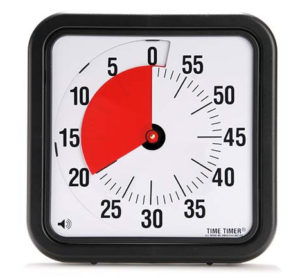 A growing body of scientific literature shows that moving around for just 2 minutes out of every 20 minutes that you would be otherwise completely sedentary has tremendous health benefits. This means that repeatedly setting a 20 minute timer and then getting up and walking around for 2 minute throughout your work day can completely negate the health detriment of prolonged sitting. Interestingly, one paper published this May showed that simply standing for 2 minutes didn’t work, and that moving (a slow walk) is key.
A growing body of scientific literature shows that moving around for just 2 minutes out of every 20 minutes that you would be otherwise completely sedentary has tremendous health benefits. This means that repeatedly setting a 20 minute timer and then getting up and walking around for 2 minute throughout your work day can completely negate the health detriment of prolonged sitting. Interestingly, one paper published this May showed that simply standing for 2 minutes didn’t work, and that moving (a slow walk) is key.
That doesn’t mean that working at a standing desk is pointless though. While a standing break isn’t enough to avoid problems associated with too much sitting, working at a standing desk in lieu of a conventional desk has been shown to have great health benefits too, one of which is that it tends to increase your activity throughout the day. Maybe it’s easier to get that gentle movement scattered throughout your day if you’re already standing? More research in this field is definitely needed!
It’s also important to emphasize that the goal is to incorporate gentle movement throughout the day is in addition to some form of more moderately-intense activity at least a few times a week. I’m absolutely NOT saying that lifting weights, CrossFit, yoga, or a challenging hike aren’t amazingly good for you! Of course they are and there’s absolutely tons of benefits to including more rigorous exercise in your life (minding that the intensity isn’t too high).
My Personal Favorite Movement Biohack:
the treadmill desk
My favorite movement biohack is a treadmill desk. Yes, that’s exactly what it sounds like: walking on a treadmill while you work. You walk at a slow enough pace that you can walk mindlessly, focus on your work, and not get motion sick! For most people this is between 1 and 2 miles per hour (and yes, there is typically between 1-2 weeks of adjustment before you can truly walk and work and the same time). You aren’t replacing the benefits of moderate-intensity exercise here (CrossFit is still good for you!), but instead getting that gentle motion throughout the day!
This has personally been one of the most worthwhile investments in my health that I’ve ever made.
When I decided I wanted a treadmill desk two and a half years ago, I already owned a treadmill (a remnant of my marathoning days). So, I was specifically shopping for a desk that would fit around my treadmill. I opted for a TrekDesk Treadmill Desk, which I absolutely love because it’s quite big, very sturdy, is height adjustable, and has built-in holders for a bunch of things. The TrekDesk Treadmill Desk runs about $500 and it’s very versatile: you could also use it with an elliptical, stepper, or stationary bike (or rotate between a few different options).
If you don’t already own a treadmill but love the idea of a treadmill desk, LifeSpan Fitness makes complete models with desk and treadmill. They also make a treadmill specifically for treadmill desks but that doesn’t come with a desk—these are great to use with any other standing desk that you might have (like the TrekDesk). This is what I purchased when my 15-year old treadmill finally kicked the bucket this past Spring. The treadmills themselves run $800-$1000, and the combination treadmill and desk run from $1300-$2000 (the price difference is the power of the treadmill).
Note: you can still have terrible posture while working at a treadmill desk! Keep that in mind!
I’m certainly not the only one who has seen tremendous health improvements with a treadmill desk. See this post from today from TheBaconMum!
Treadmill desks are definitely an investment, but if you work sitting at a desk for prolonged periods of time, they are also a worthwhile one! It’s also not the only option for increasing movement while working. So don’t despair!
Simple Strategies for Adding Movement to Your Day
What do you do if the glorious treadmill desk is not something you can access in your work environment or afford for your home office? Even if your life involves working at the computer all day (or being trapped at a desk for any other reason), you can sneak in brief periods of movement to help break up the time you spend sitting.
I recommend setting a timer to go off every 20 minutes during your workday. While all you need is a simple stroll for 2 minutes, here are some ideas to try throughout the day to make the most prioritizing those breaks easier:
At work when your timer goes off:
- Go for a walk!
- Do some air squats and knee-ups
- Stretch your arms high above your head
- If there’s a staircase nearby, quickly walk up a couple flights and then return to your desk
- Bring a jump rope to work!
- Who said you can’t do pushups and burpees at work?
At work when the opportunity arises:
- Get up from your desk and walk around while waiting for that huge file to send or that document to print.
- Try to convince your boss and coworkers to have “walking meetings” instead of making everyone sit around a table (along with keeping employees healthier, walking can help boost creative thinking and problem solving, so it’s win-win!)
- Offer to go pick up the lunch order (and walk there!)
- Take the stairs when going from one part of your building to another
- Go for a walk during your breaks
In the car:
- When you’re stuck at a stoplight, stretch your elbows above your head and lift your knees up a few inches
- Turn up the radio and bust a few moves in your seat (remember, this is about improving your health, so it’s okay to look like a dork!)
- If you’re on a road trip (or otherwise aren’t up against the clock trying to get to your destination), take frequent pit stops to get out of the car, stretch, and walk around
- Consider ditching the car all together and taking public transportation (where you can stand up and offer another lucky passenger your seat), or ride your bike
- Take the farthest parking spot so you’ll have a longer walk
At home:
- When watching TV, stand up and walk around during commercials
- Do light housework while watching TV (ironing, cleaning the room, folding laundry)
Remember, the goal here is to encourage lymph flow and muscle movement. So, anything that involves engaging your muscles, stretching your body, and changing positions will be helpful.
If changing your sitting behavior seems daunting, there are a few tools available to help make the process easier. You can download a free phone app called Stand Up! The Work Break Timer that lets you set reminders to get up and move around. That way, even if you get absorbed in what you’re doing and the time starts flying, you can be gently reminded to get up at regular intervals.
Along with interrupting sedentary periods with movement breaks, you can also try being in a constant (or near-constant) state of gentle movement throughout the day. Clearly, the treadmill desk is a great option for this, but it’s not the only one! One great way to increase movement while sitting is getting a cheap and inconspicuous DeskCycle, which is just the pedals and gears of a stationary bike. You can slide it under your desk at work or at home and engage in some gentle movement without distracting the people around you.
Citations
Kerjaschki D. “The lymphatic vasculature revisited.” J Clin Invest. 2014 Mar 3; 124(3): 874–877.
Pontzer, et al. “Hunter-Gatherer Energetics and Human Obesity.” PLoS One. 2012; 7(7): e40503.
Veerman, et al. “Television viewing time and reduced life expectancy: a life table analysis.” Br J Sports Med doi:10.1136/bjsm.2011.085662
Zawieja D. “Contractile Physiology of Lymphatics.” Lymphat Res Biol. 2009 Jun; 7(2): 87–96.

